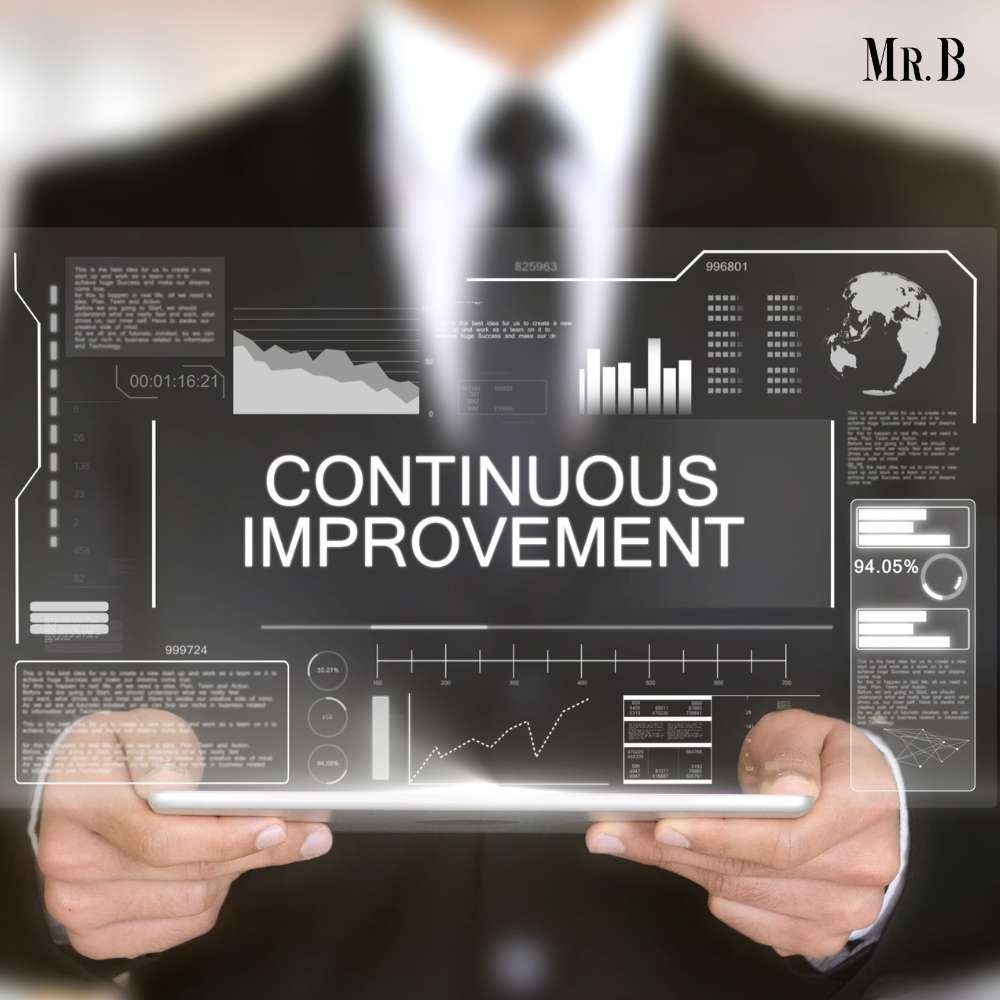What are the 5 Elements of Performance Management System?
- Category: Business

A performance management system helps a manager to plan things better. These systems are used by managers to keep the workforce motivated. According to a study, 50% of employees feel their performance evaluations are fair and transparent. While evaluating performance, employees are often downplayed and criticized. They may feel uninterested and may lack motivation to work further. An effective and structured approach for performance evaluation can improve the overall discomfort of performance evaluation within the organization. An effective performance management system can improve employee morale.
Here are the 5 elements of a performance management system:
1. Goal setting: Establishing clear and measurable objectives
At the heart of any effective Performance Management System lies the element of goal setting. This initial phase involves collaboratively defining clear, specific, and measurable objectives that align with both individual roles and organizational goals. The objectives should adhere to the SMART criteria, ensuring they are Specific, Measurable, Achievable, Relevant, and Time-bound. Well-defined goals provide employees with a roadmap, offering clarity on expectations and creating a foundation for subsequent performance evaluations.
2. Regular feedback and communication: Building a culture of open dialogue
The second crucial element revolves around regular feedback and communication. This ongoing process involves consistent communication between managers and employees, creating a culture of open dialogue. Regular check-ins, performance discussions, and constructive feedback sessions contribute to employee development, allowing for timely adjustments and addressing any challenges or concerns promptly. Effective communication fosters transparency, builds trust, and reinforces the connection between individual contributions and organizational success.
3. Performance evaluation: Ensuring fair and consistent assessments
Performance evaluation constitutes a cornerstone of the Performance Management System. This element involves a systematic and fair assessment of employee performance against pre-established goals and expectations. The evaluation process should be consistent, transparent, and free from biases. Incorporating both quantitative and qualitative measures, performance evaluations provide a comprehensive view of an employee’s contributions, facilitating informed decision-making related to promotions, compensation, and career development.

4. Employee development: Nurturing growth and continuous learning
An effective Performance Management System prioritizes employee development as a core element. This involves identifying opportunities for skill enhancement, training, and continuous learning. By focusing on employee development, organizations not only support individual growth but also ensure that their workforce remains adaptable and equipped with the skills needed to meet evolving job requirements. Employee development is integral to talent retention and contributes to a culture of continuous improvement.
5. Recognition and rewards: Acknowledging and motivating high performance
The final element centers around recognition and rewards. Acknowledging and appreciating high-performing employees is crucial for sustaining a positive work culture and motivating individuals to excel. Recognition can take various forms, including verbal praise, awards, or monetary incentives. By linking recognition to performance outcomes, organizations reinforce a culture of excellence, fostering motivation and commitment among employees.
The Importance of performance management systems to business organizations
A Performance Management System is the backbone of organizational effectiveness, playing a pivotal role in driving employee engagement, productivity, and overall success. By aligning individual performance with organizational objectives, a well-implemented PMS contributes to several key areas of business excellence:
1. Enhanced employee productivity:
A clear and well-communicated set of objectives motivates employees, leading to increased productivity. Regular feedback and recognition reinforce positive behaviors, driving employees to excel in their roles.
2. Improved employee engagement:
An effective Performance Management System fosters a culture of open communication and collaboration, enhancing employee engagement. Engaged employees are more likely to contribute proactively to the organization’s success.
3. Talent development and retention:
A PMS that emphasizes continuous improvement provides opportunities for employee development. This, in turn, contributes to talent retention by demonstrating the organization’s commitment to nurturing and advancing its workforce.
4. Alignment with organizational goals:
The 5 C’s of Performance Management ensure that individual and team objectives are closely aligned with organizational goals. This alignment is essential for maintaining a cohesive and focused workforce working towards shared objectives.
5. Strategic decision-making:
Consistent and reliable performance data generated by a PMS facilitates strategic decision-making. Organizations can identify areas of strength, address weaknesses, and make informed decisions to optimize resource allocation and drive overall success.

The 5 C’s of performance management system
1. Clarity: Setting clear objectives and expectations
The first and fundamental element of an efficient Performance Management System is clarity. Clear communication of organizational goals, individual expectations, and performance standards is paramount. This involves establishing SMART (Specific, Measurable, Achievable, Relevant, Time-bound) objectives that employees can comprehend and work towards. Clarity ensures that employees understand their roles, responsibilities, and how their efforts contribute to the broader success of the organization.
2. Communication: Promoting open and constructive dialogue
Effective communication is the linchpin of any successful Performance Management System. Regular and transparent communication fosters a culture of openness, allowing managers and employees to engage in constructive dialogue. This involves providing feedback – both positive and constructive – on an ongoing basis, facilitating discussions about career development, and addressing any challenges or concerns promptly. Robust communication channels contribute to a positive work environment, fostering mutual understanding and trust.
3. Consistency: Fair and equitable evaluation processes
Consistency is crucial in ensuring fairness and equity in performance evaluations. A well-structured Performance Management System follows standardized evaluation processes, ensuring that all employees are assessed using the same criteria. Consistency minimizes biases and promotes a fair assessment of individual contributions. This element also involves regular check-ins to maintain a continuous feedback loop, enabling timely adjustments and ensuring that performance discussions are not confined to annual reviews.
4. Collaboration: Teamwork and cross-functional alignment
Collaboration is a pivotal element that emphasizes the interconnectedness of individual and team performance with broader organizational goals. A Performance Management System should encourage collaboration across teams and departments, fostering a culture where employees work together to achieve common objectives. This involves recognizing and rewarding collaborative efforts, aligning team goals with organizational strategy, and promoting a sense of shared responsibility for success.

5. Continuous improvement: Evolving with organizational needs
The fifth element, continuous improvement, underscores the dynamic nature of Performance Management Systems. Organizations must adapt and evolve their PMS to meet changing business needs. This involves regularly reviewing and updating performance metrics, embracing innovative technologies to enhance evaluation processes, and providing continuous learning opportunities. A PMS that emphasizes continuous improvement ensures that the system remains relevant and effective in a rapidly evolving business environment.
Conclusion:
A well-designed and effectively implemented Performance Management System is a cornerstone of organizational success. The 5 C’s – Clarity, Communication, Consistency, Collaboration, and Continuous Improvement – serve as the guiding principles for building a robust framework that aligns individual efforts with overarching business objectives. Recognizing the importance of Performance Management Systems to business organizations is paramount in fostering a culture of excellence, continuous growth, and strategic alignment.







